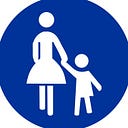A hundred years ago in Seattle, multifamily housing was legal to co-mingle with detached housing — that is, it was legal everywhere housing was legal. There was no single family zoning. During this period, between 1900 and 1920, Seattle’s population grew by over 230,000 residents.
Seattle’s land use prior to the 1923 Comprehensive Plan was covered by the building code. The 1909 building code defined a dwelling, ‘A building designed and used only for the residence of not over two separate and distinct families’ (a duplex), and Tenement House, ‘Any house, building, structure or portion thereof, occupied or adapted for occupation as a dwelling by more than three families living independently of one another and doing their cooking upon the premises, or by more than two families above the first story so living and cooking. A family living in a tenement may consist of one or more persons,’ so a triplex or larger. The 1917 building code definition of dwelling was reduced to just a single family unit, and the tenement, also known as an apartment house, was anything with 2 or more units. We will revisit this shifting language in a future article.
In 1917, there were four districts (1st, 2nd, 3rd, and 4th) and four classes (Fireproof buildings, mill buildings, ordinary masonry, and frame buildings). The districts, mapped above, dictated what building classes were required where. The 1st district, roughly between Yesler and Stewart, and 1st and 4th Aves downtown — allowed fireproof buildings or Mill buildings up to two storeys. The 2nd district was a ring around the 1st district which allowed fireproof buildings, Mill buildings, one story masonry buildings, and masonry dwellings up to two storeys plus roof. The 3rd district was a larger ring around the 2nd, allowing fireproof, mill, masonry buildings — and one storey wood framed buildings, two storey wood-framed dwellings. The 3rd district was bounded by Denny, Broadway, and Holgate — along with what is now the historic core of Ballard. The 4th district permitted any type of building — and was roughly the balance of the city, which in 1909 was most of today’s Seattle south of N 85th St. in Greenwood (map)
Within each class of building, there were further limitations on height, lot coverage, and setbacks based on the usage. I won’t dwell on this issue, but I will note that at 128 pages (much of it ads!) — the 1917 building/land use code was much smaller, and much more permissive than anything since — and in a lot of ways reminds me of buildings codes from when I was working in Germany.
Because most of Seattle was in the 4th district — I’m going to focus on this wood framed section. There’s some really interesting stuff here. Height limits in this district max out at 40 feet, with a max roof height of 50'. Wood frame apartments were limited to a wall height of 30', with max roof height at 40' — which was a reduction in height from the 1909 code. Frame buildings could be zero lot line if they walls were masonry or ‘approved slow burning construction.’ Dwellings could be within 3' of lot lines. Lot coverage for wood framed residences varied from 77%-100%. There were no restrictions on where places of habitation (defined as: family residences or dwellings, hotels, tenement or apartment houses, flats, boarding or lodging houses, dormitories, and clubs) could be located. This is why many of Seattle’s present-day single family zones include duplexes, triplexes, and apartment buildings. There was no single family zoning, so you could have an apartment next to a detached home. Sightline has a really good article mapping these very buildings. From a present-day zoning comparison, almost all of Seattle was zoned LR3 with a 30' height limit. The reality is that today, multifamily housing is illegal almost everywhere housing is legal — which is exacerbating our housing crisis as hundreds of thousands of residents move here.
There are some other interesting things to note from the 1917 code. Residences in fireproof districts could be the width of the street plus 25 feet (reminiscent of Japanese zoning). Yards for apartments could be omitted if the roof could be used for play and recreation of the occupants — I would love to see what this looked like in practice.
Next time, we will visit the dreaded 1923 comprehensive plan.
